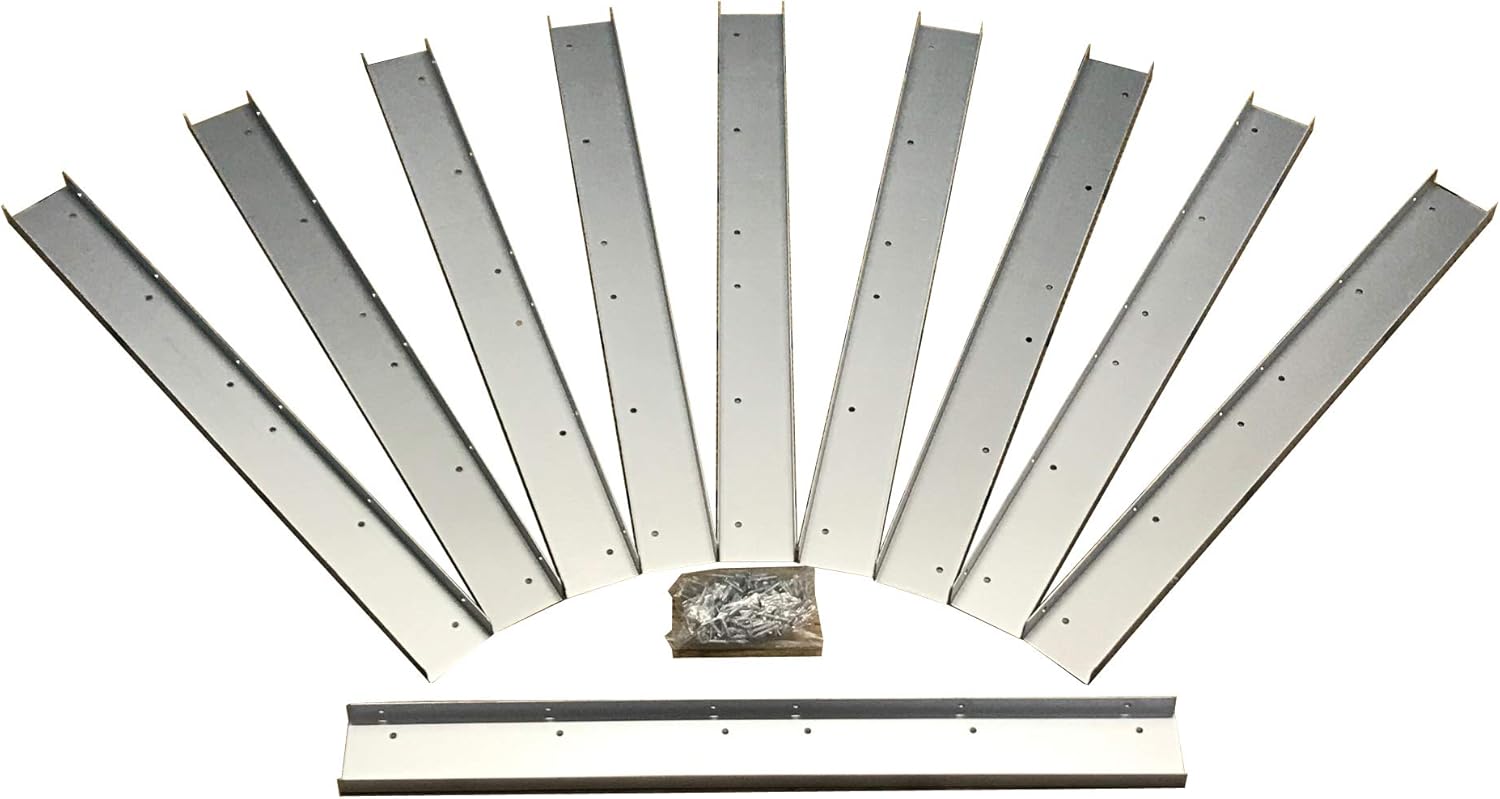
Selections Fence Trellis Topper Bracket Height Extension Arms Pack (5 Pairs inc Screws)
FREE Shipping
Selections Fence Trellis Topper Bracket Height Extension Arms Pack (5 Pairs inc Screws)
- Brand: Unbranded

Description
If you need to extend the height of your fence in certain areas, these can be retro fitted to existing clipex posts, the vertical extension has 3 spring loaded clips that allow for barbed, plain wire or electric wire if using Clipex insulators. The process involves fitting a Postsaver sleeve onto the post in the correct position to help prevent premature rot taking place. Catnets is a proud partner of many non-for-profit organisations and is dedicated to helping support all our partners with the important work they are doing to rescue and protect animals in need. For example, you'll generally need the top 1ft/30cm of your fence or wall to be clear of plant growth.
Read more about the condition New: A brand-new, unused, unopened and undamaged item in original retail packaging (where packaging is applicable). Our kits include the right number of brackets for 2m intervals, the standard fence panel width in UK gardens.We have designed various cranked arm options to take apron fold netting, electric lines or barbed wire.
Any Clipex post can be extended above or below ground by simply using the unique Beefy and standard extension bracket. No two fences are the same, and that’s why you’ll find an excellent selection of products within our fencing supplies range. For more information on any concrete products or to obtain a quote for your job please contact us or phone sales on 01892 864646. Preservative treatments must be fully dry before applying quality decorative treatments such as those made by Sikkens and Protek.One of the most commonly built enclosures, a side alley enclosure, makes perfect use of an un-utilised area of a house. If you have a mature garden with lots of plants, the cats will absolutely love the enrichment it offers. The WBM Plastic Dark Grey Post Cap is to be used for the top of the post to complete the look and protect the post. New: A brand-new, unused, unopened and undamaged item in original retail packaging (where packaging . If you would like your gates to keep their natural colour for longer then the surface can be protected with regular coats of Danish oil or Teak oil following the oil manufacturers instructions.
Fence brackets play a crucial role in fastening fence panels to fence posts, providing stability and security for the entire fence structure. Finance is provided by PayPal Credit (a trading name of PayPal UK Ltd, Whittaker House, Whittaker Avenue, Richmond-Upon-Thames, Surrey, United Kingdom, TW9 1EH). They are available in a wide range of sizes, accommodating different fence panel and post dimensions to suit your specific fencing needs. The Cranked Angle Bracket will allow you to add barbed or razor wire to the top of your permanent fencing, at an angle.Untreated Softwood Gates Untreated Softwood Entrance Gates Crestala’s Untreated Softwood Entrance Gates are manufactured by skilled gate makers in a variety of styles. The Extra Long Brackets have a 50cm vertical mounting face which is 20cm longer than the standard brackets. The 103 third parties who use cookies on this service do so for their purposes of displaying and measuring personalized ads, generating audience insights, and developing and improving products. Most purchases from business sellers are protected by the Consumer Contract Regulations 2013 which give you the right to cancel the purchase within 14 days after the day you receive the item. Transform your outside space into a beautiful extension of your home with the Wickes range of reliable fencing accessories here.
The cat fence extension kit provides cats with more room to roam the yard by converting an existing structure or fence into a larger outdoor play area.If you are suffering from a lack of privacy but don't feel like completely re-doing your fencing, these extension brackets could help.
- Fruugo ID: 258392218-563234582
- EAN: 764486781913
-
Sold by: Fruugo
